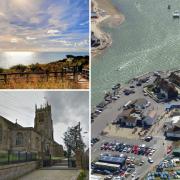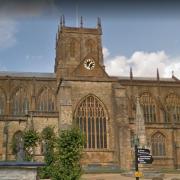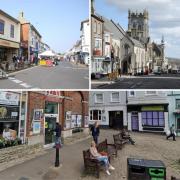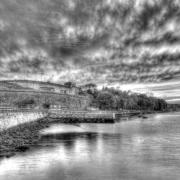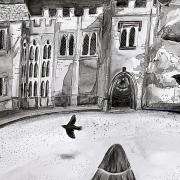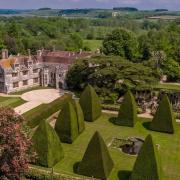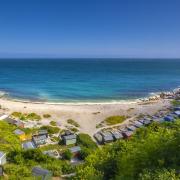Exploring Old Poole, Edward Griffiths discovers the 'new' blending happily with the 'old'
Forever Poole Exploring Old Poole, Edward Griffiths discovers the ‘new’ blending happily with the ‘old’
Poole has a rich history dating back to the Bronze Age but we’re not going quite so far back in time; instead we are looking at the Poole at the start of the 20th century compared with the Poole of the 21st century. Modern Poole’s shopping centre was built on land previously occupied by Old Poole’s 18th- and 19th-century houses and businesses packed into the area behind Poole Quay. But not everything was demolished in the name of progress. As more recent photographs show, some of the better old buildings are still standing, and road and junction layouts are largely unaltered.
For example, looking at a picture of Poole High Street around 1910, everybody is wearing some sort of headgear, some have handcarts and one drives a pony-cart. A long row of brick houses stands in front of where Orchard Plaza was recently built, itself in front of Castle Street’s multi-storey car park. On the New Street side of the road, Latimer House has appeared, alongside some of the more elegant older buildings. The three-storey block with the round-arched windows still stands back from the High Street and the old brick houses have been replaced by a paved pedestrian area, made greener by the addition of some fine trees.In another black-and-white photograph, taken on a sunny morning probably around 1900, where Lagland Street crosses High Street into North Street, the photographer was looking towards present Falkland Square, with the Dolphin Centre beyond the railway crossing. At that time, the imposing Victorian building on the North Street corner was Bailey & Sons’ House Furnishers, but now it’s a well-known burger chain. Either side of High Street, most old buildings have been replaced but, if you look above the shop fronts, you’ll find that some of the better Georgian buildings survived. In the old picture, an elegant lady with flowing skirts is passing Beech Hurst house; these days the mansion houses smart offices.
Become a member and share your Dorset memories in the comments box at the bottom of this article
At the extreme south-west end of High Street, Poole Museum and Local History Centre occupies an old warehouse and Town Cellars. The medieval town cellars building used to be much longer, but Thames Street cut through its west end in the late 18th century, allowing access to the Tudor New Inn, before it became The King Charles. A photograph taken about 1910 shows two old chaps on the corner of Thames Street, one nonchalantly sweeping the pavement whilst the other leans against a column of the present Customs Office colonnade, watching the photographer at work. The ancient stone slabs and cobbles are still there today.
On the Quay itself, defences against rising tide levels have changed the view considerably since a 1930 picture showing an old paddle-steamer was taken. Until the gasworks were demolished in the late 1960s, railway tracks brought coal-trucks to the gas-works’ overhead crane. Many of the old grain-store buildings and mills facing the harbour have been converted into a whole range of interesting restaurants, the Tourist Information Centre, shops and offices. The old Fish Shambles disappeared many years ago, but a shelter based on the original size and shape has since been built in the exact spot. In fact, much of the area has been completely modernised, with the massive seafront development of apartments and shops fronting onto the quay. Thanks to David Watkins of Poole Museum’s Local History Centre for the archive photographs.
Make the most of your time in Poole…
Poole MuseumThe Museum’s four floors of galleries include displays ranging from local archaeology to art and from pirates to potteries. During the winter months and until 28 March, the Museum is open Tuesday to Saturday 10am to 4pm and Sundays 12 noon to 4pm. Current exhibitions include ‘Discovering Poole, an Artists’ Haven’, until Sunday 28 February which shows the development of art in Poole between 1850 and 1950. Poole attracted many of England’s leading artists during this period, including Augustus John and Philip Wilson Steer, who were connected with London’s influential Slade School of Fine Art.
Poole Lighthouse:4 February – Piccadilly Dance Orchestra. Music from Broadway and Hollywood between the wars 6 February – John Williams Film Night. Classic film scores 19 February – The Selfish Giant. Oscar Wilde’s classic story about a giant whose heart is stolen by a little boy 23-27 February – The Lady Vanishes. Comedy-thriller
Further details: http://www.lighthousepoole.co.uk/ or call 0844 406 8666



